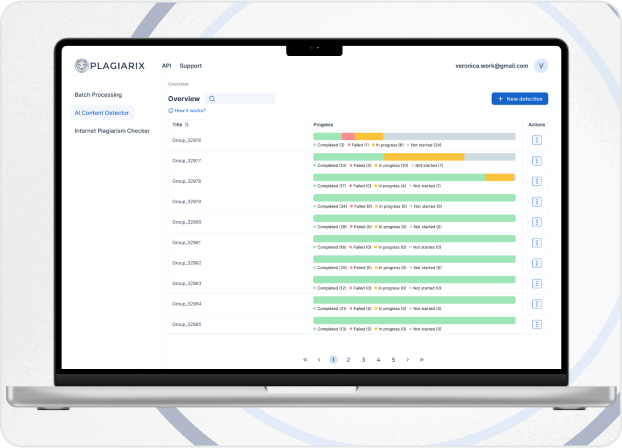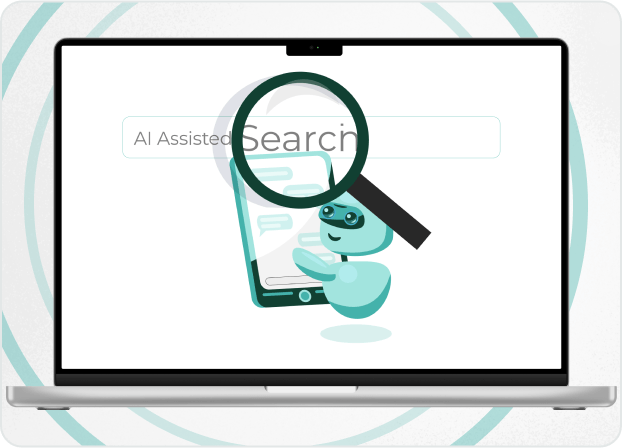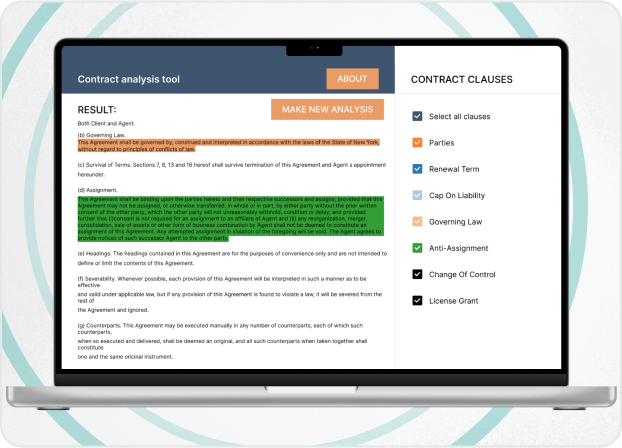
Expert’s Thoughts

"In February 2025 Andrej Karpathy, co-founder of OpenAI, introduced the term ‘vibe coding’ as a way of writing code with the usage of large language models. The presentation was immediately followed by both social media and the software development community, and a few months later the term took its foothold.
However, the concept of vibe coding has been causing more and more arguments in the business and development community. Some praise the approach as the new era in software development, while others doubt its perspectives. This blogpost is a comprehensive overview at the controversial nature of vibe coding."
Yuri Svirid, PhD. — CEO Silk Data
Some Insights from the Industry
In March 2025 US venture capital firm Y Combinator posted a YouTube of its General Partners discussing the immerging trend of vibe coding. They provided a statement that this approach ‘is the dominant way to code’. Apart from that, they also indicated that around 25% of all the startups sponsored by them and launched within their ecosystem (which means more than 1200 companies) had codebases that were 95% AI-generated. In addition, according to TechCrunch research, startups including Bolt.new, Codeium, Cursor, Lovable, and Magic have raised hundreds of millions of dollars in funding since March 2024.
Michelle Greenwald, a CEO of Catalyzing Innovation and marketing tutor at New York University and Paris Schools of Business, also shared her opinion on vibe coding tools in one of the Forbes articles.
'For the first 5 months since the term vibe coding was coined, the concept has transformed software development lifecycles’ she said. Michelle was especially fascinated with the fact that vibe coding approach has been adopted by marketers. The same Forbes report indicates that now ‘non-researchers can easily gain in-depth human understanding of their consumers’ and ‘marketing research has progressed more in the past 2 years, than in the previous 20 years.'
Silk Data intends to consider why so many companies (not only software development and IT consulting) are so enthusiastic about using AI for coding. In addition, we will highlight why everyone should be careful about the concept’s adoption.
What is Vibe Coding?
Let’s start by defining the vibe coding meaning.
The term presented by Andrej Karpathy describes the coding process with the focus on guiding special AI assistant on code generation, refinement and correction. The assistant can perform the actions thanks to the usage of NLP technologies that allow the machine to perceive human commands, process them and generate responses in the form of code.
Soon after Andrej Karpathy had announced the term, the meaning has been transforming and widening. Now vibe coding is described as a full software development approach that allows to accelerate web and mobile development.
In doing so, the approach is based on the development philosophy of ‘code first, refine later’. It means that when developers apply vibe code, they prioritize experiments, idea generation and quick prototyping upon the systematic and deliberate structure building and planning. In addition, the developer also defines the AI model and future code intention, structure and behavior of the written functions and elements, i.e. defines the ‘vibe’.
Starting from this point, further exploration becomes complicated. The reason is in different understanding of AI assistance in coding.
For example, IBM provides an idea that AI generates code and nothing more, while the prior work still lies on human. Humans should create ideas, set goals, think on the functions and permanently refine the code written by a machine.
However, such understanding finds opposition among experienced software developers.
Simon Willison, a world-known British programmer and co-creator of the Django Web framework, declares that vibe coding means ‘building software with an LLM without reviewing the code it writes’. He supports this statement by the following:
'If an LLM wrote every line of your code, but you've reviewed, tested, and understood it all, that's not vibe coding in my book – that's using an LLM as a typing assistant.'
So, according to professional programmers, the core of vibe coding lies in the user accepting written code without full understanding.
Such a contradiction in understanding the principle of the approach is partially solved by Google, who divide vibe coding into two ways:
- Pure vibe coding. The way when the ‘coder’ fully trusts the AI and ‘forgets that the code even exists’.
- Responsible vibe coding. The way when the LLM is used as an AI coding assistant, no more no less. All the tests and reviewing are performed by a developer, as well as code generation guidance.
As the question of these ways differentiation problem should be discussed later, we’ll get to the technical essence of the approach.
Closer Look at Vibe Coding Process
There are several tools and methods that make vibe coding truly effective.
First, a large language model, one of the key parts of the process, responsible for perceiving and processing human prompts, context-aware code generation and style adaptation.
The choice of the best AI model depends on the development needs. The question of how different LLMs cope with coding tasks has been touched on in our blogpost dedicated to popular AI models comparison. However, there’re some of them that were specially fine-tuned for coding, for example, CodeLlama.
This open-source LLM backed by Meta was specially optimized for high-accuracy code generation on most popular programming languages. The key elements of this optimization are:
- Coding-oriented foundation. Code Llama was trained on large amount of code-related data, including public codebases and datasets (GitHub, Stack Overflow, etc.) and language-specific technical documentation.
- Multi-language support. The LLM covers most popular programming languages, including Python, C++, Java, Rust, SQL and much more.
- Extended context understanding. It can handle rather large codebases (up to 100 thousand tokens) staying coherent. Furthermore, it can even predict missing code lines by analyzing the contextual surrounding.
Nevertheless, even non-specified models like ChatGPT, Gemini or DeepSeek can provide sufficient aid in coding process. In doing so, they rely on RAG (Retrieval-Augmented Generation) technology.
It was thoroughly discovered and analyzed in one of our blogposts dedicated to the usage of ChatGPT in business.
Recalling the information, RAG means standard LLM capabilities reinforcement with additional content. The model extracts the data for this context from various external knowledge bases. In the field of code generation, these bases are presented by open-source or internal corporate codebases or task-specific documentation. As a result, the code accuracy is enhanced by relevant examples and development techniques.
Next technology that makes vibe coding efficient is reinforcement learning. Its nature is in the human developer supervising the proposals and code fragments, either accepting or rejecting them. Both acceptance and rejection data, as well as developers’ comments, are the source for additional model training. Over time, the AI can understand the developer’s preferences.
In essence, the standard vibe coding process looks like the following:
- Context and intent specification. The developer types an input that includes all the necessary specifics (functionality description, programming language, structure, etc.). At this stage, the AI agent can also ask the developer for further clarification.
- Input processing. When all the specifications are made the AI retrieves the knowledge related to it. For example, it can find and use similar endpoints from the open source or internal codebase.
- Code output generation. The AI model provides the static code for the function needed.
- Revision and refinement. One of the most vital stages. It implies that the developer will see the initial result and provide more specifications for the mode. It can be a request for a new function or new limitations for the current one (like the unacceptable symbols for username form) or just a statement that the code is wrong and should be rewritten. This is also the stage where AI itself can suggest edits and further operations.
How Can You Benefit from Vibe Coding?
Now we need to have a look at potential benefits of writing code this way.

Rapid Prototyping
Using AI code assistant can shorten the time your developers spend on idea verification to mere hours.
The fact that the development team spend less time looking for the necessary codebases, libraries or other entities and focus on architecture and business logic instead, makes vibe coding attractive for business.
In essence, vibe coding is a perfect way on quick PoC and MVP development. It’s enough to have a skillful software engineer supervising the AI model’s work, and you’ll be able to see the verification of your ideas without days.

Enhanced Idea Bouncing
The feature of vibe coding that is considered the most beneficial by develops is the possibility to quickly test various ideas.
This benefit is crucial not only for programmers but for entire product teams, who can input lots of specifications for the future product. For example, working with AI code assistant, you can work on the most suitable structure and business logic of the future app. You can plan the number of features and the way they are displayed, pages hierarchy and much more.
It’s a benefit from which marketers, web designers and content creators can contribute as well.
However, the benefit that truly interests business is increased software development productivity and optimization of development costs. From this point, the situation looks not so bright.
In July 2025 METR research institute posted a paper on AI impact on development productivity. The research is based on 16 software developers with 5+ years of experience of work on various projects. The research data was their performance on the total number of 246 tasks with the usage of AI.
The result demonstrated that the average performance rate faced a 19% slowdown. This number was even more shocking, as all the parties (not only developers) anticipated sufficient productivity growth. Economics experts predicted almost 40% speedup , as well as ML experts, and even software developers themselves anticipated no less than 20% productivity increase.
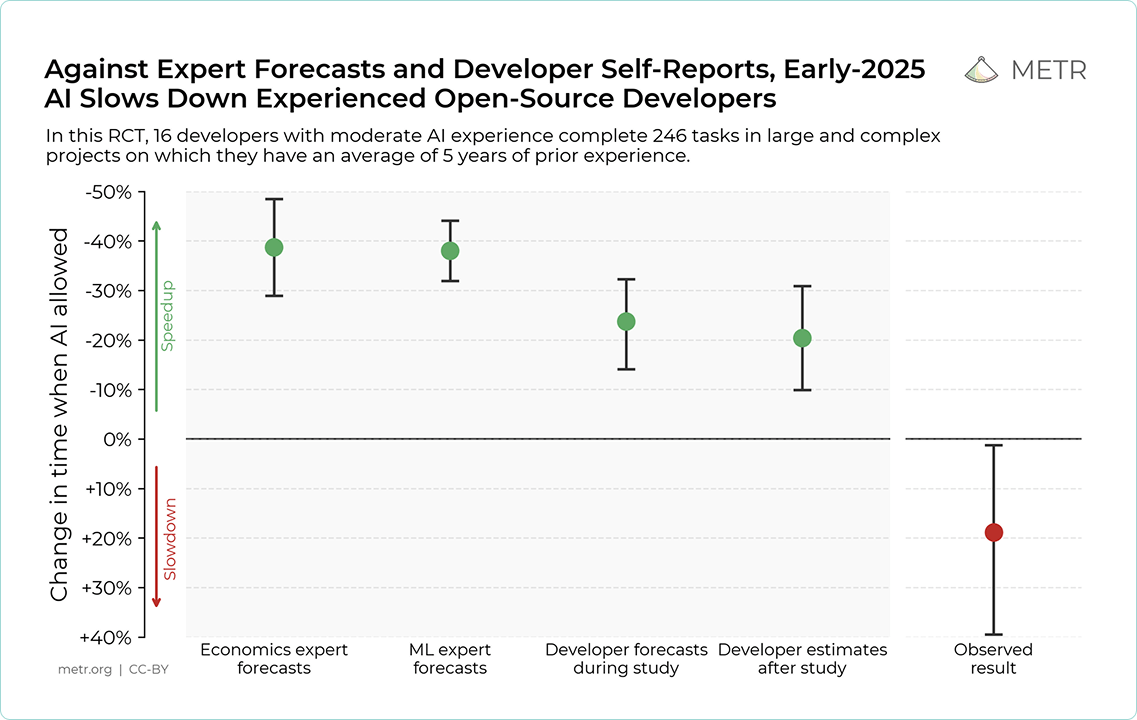
Source: https://metr.org/blog/2025-07-10-early-2025-ai-experienced-os-dev-study/
Indeed, this research can’t put the final point on the question, as we should consider several side factors:
- The number of respondents is rather small to provide the whole picture.
- The types of software development tasks were not specified.
- AI models demonstrated slowdown on coding tasks that typically take no more than 4 hours of developers’ working time.
Benchmarks like SWE-Bench, Verified and RE-Bench indicate that AI models often succeed at tasks of high difficulty that require lots of knowledge and development experience.
A Few Words about the VibeOps and Modern Vibe Coding Tools
Now we have to look at one more term that appeared almost immediately after the vibe coding.
VibeOps is a development methodology that puts developer and their convenience into center. It implies that the developer shouldn’t stop their work or even leave their integrated development environment (IDE) to consider operational tasks or collaborate with operational specifics (like in traditional old-fashioned DevOps).
Instead, the developer focuses on creativity, feature, structure and logic planning, while AI handles all the implementation details.
In VibeOps there are several possible traits that make it attractive:
- AI-powered infrastructure definition. The developer can describe the infrastructure needs of the project, and the AI model can propose various code configuration options. The developer simply approves or declines the suggestions and goes further with the project.
- AI-based system problems solving. AI can investigate system logs and metrics, if the developer requests. It can find possible software infrastructure needs (like more servers or database throughput optimization), track abnormal system behavior (excessive CPU, memory or traffic rates) or provide security threats detection, identifying malicious activities. It can solve the problem on its own or provide recommendations or a full ‘to-do’ list for a human.
- AI-supported development consistency. AI can provide code building, environment configuring and testing (primarily, performance, maintenance and integration testing) without developers concerning themselves about details of all these processes. It means no context-switching and enhanced productivity.
This concept is still rudimentary, but some developers see great perspectives in it. They’re sure that in the near future, the capabilities of AI usage in development process will be manifold greater.
For example, AI can implement and save the final infrastructure defined by the developer, so that it could be used in related projects. Moreover, the AI could capture both the technical problem and its solution patterns that will lower the possibility of future problems occur. Altogether these innovations may positively influence the productivity of development teams bringing significant competitive advantages.
Despite there are hardly vibe coding systems able to provide such a wide range of functions, some of them are still rather popular and efficient:
Cursor. One of the most popular tools for vibe coding launched first in 2023. For the past years, the development company received lots of fundings from OpenAI and Andreessen Horowitz which allowed it to gain popularity. Users can generate or update parts of their code by providing prompts, while the tool can index the entire codebase, which can be queried in natural language. In addition, the editor offers smart rewrite capabilities and predicts subsequent code edits , so that the user can jump and apply them using tabs.
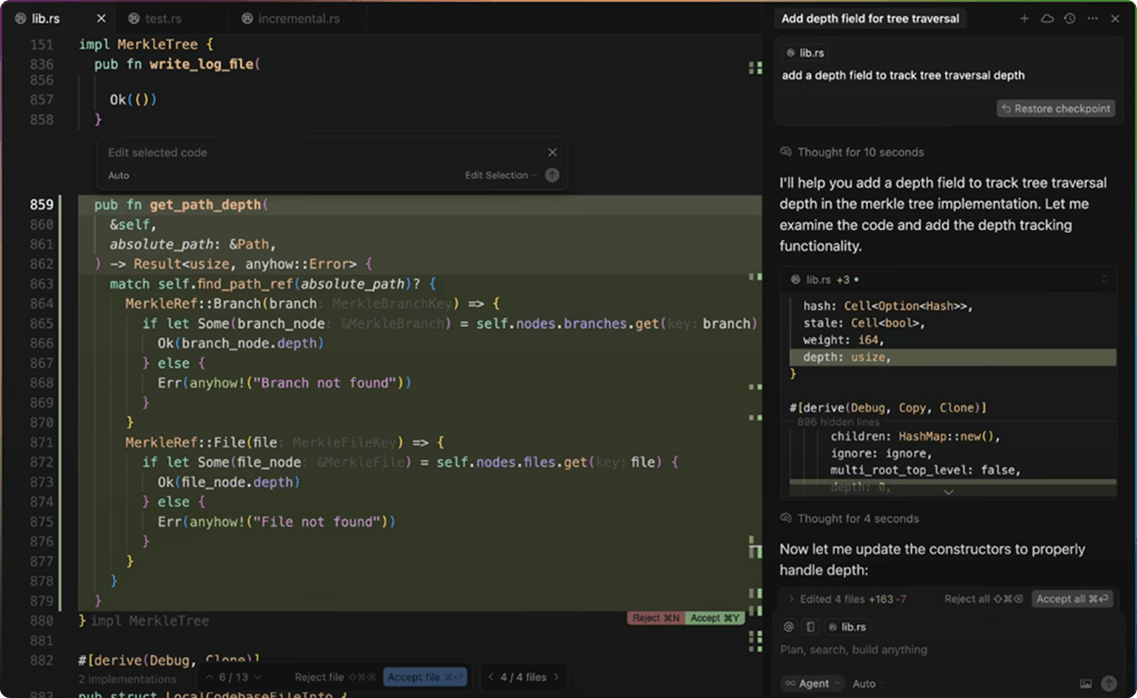
Loveable.dev. Another AI development tool with intuitive interface and principle of work. The user just inputs the query about the code entity they need and gets the result. A good tool for those who need to quickly build a code skeleton of their digital project.

Replit. Replit is an American technology company founded in 2016 with the main specialization of providing its custom online integrated development environment. However, now Replit demonstrates greater focus shift on the AI-powered software and app development. To the benefits of the tool, Replit can automatically pick the relevant technologies to incorporate without any specific guidance required. However, working with Replit, you still need certain level of technical knowledge.
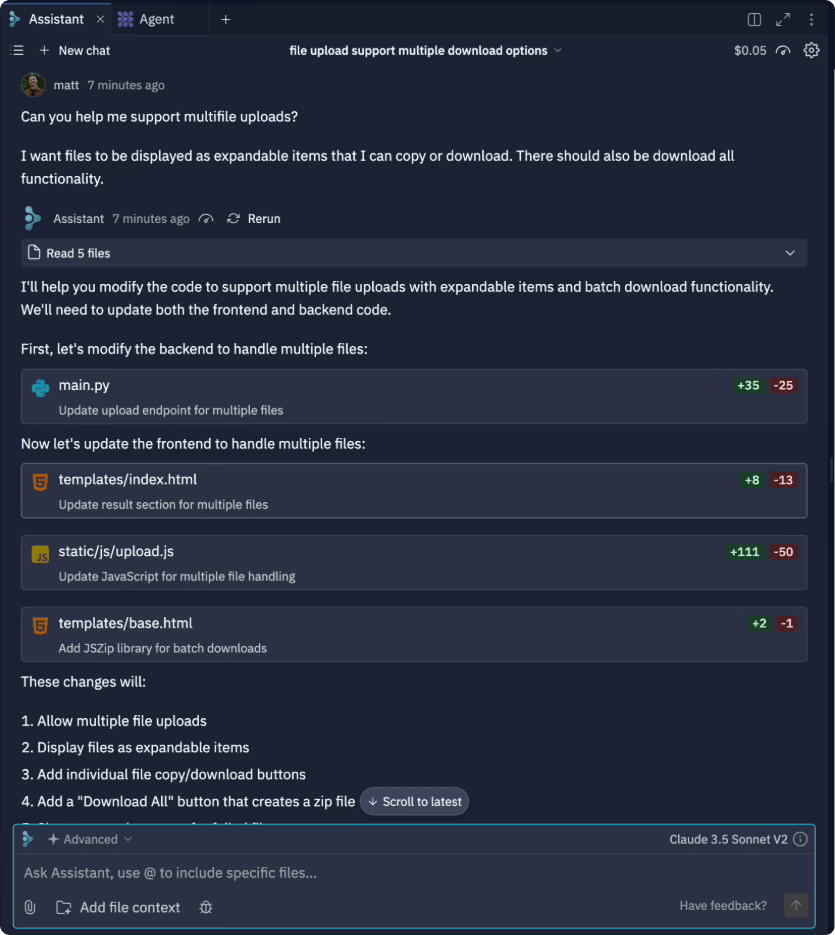
Important Considerations of Using AI for Coding
Now, we get to one of the most harsh questions of this blogpost – the limitations and possible dangers of vibe coding and AI-assisted coding in general.
We touched some of the problems in the previous block, while the research conducted by METR can lead to even greater concerns.
The main controversial question of vibe coding efficiency is the level of AI autonomy. As Simon Willison rightly noted, if you have to review, test and edit every line of AI-written code, your LLM is a typing assistant and not a code assistant. Simon Willison also appreciates the twit from Andrej Karpathy, the man who invented the term ‘vibe coding’:
‘Vibe coding is where you fully give in to the vibes, embrace exponentials and forget that the code even exists. It’s not too bad for throwaway weekend projects, but still quite amusing. I’m building a project or webapp, but it’s not really coding – I just see stuff, say stuff, run stuff and copy paste stuff, and it mostly works.’
He supports this position saying that vibe coding is ‘a fun way to try new ideas’, while the speed of LLM’s coding capability is unmatched even by the most experienced developers.
However, writing a code is not software development, web development, mobile development or AI development.
This is what Willison says:
‘We need to consider performance, accessibility, security, maintainability, cost efficiency. Software engineering is all about trade-offs – our job is to pick from dozens of potential solutions by balancing all manner of requirements, both explicit and implied’.
Taking this into account he adds:
‘If an LLM wrote the code for you, and you then reviewed it, tested it thoroughly and made sure you could explain how it works to someone else that’s not vibe coding, it’s software development’.
This position is supported by many in the software development community, as many developers rightly note that there’s no code totally untouched by a human. Moreover, they also indicate that ‘smart professional developers only write new code when absolutely necessary (as there are lots of ready-to-use libraries and copy/paste functions that have been existing and used long before AI)’.
There are also several cases, when it is normal to vibe code, and to be particular, apply to pure vibe coding:
- Home ‘weekend’ projects. These are the projects unlikely to be used for any commercial purposes and by large number of people. Developers are free to use any tools and methods they want within their professional hobby.
- Creativity bouncing projects. The custom projects that serve one purpose – to practically test various ideas, new ways of coding, structure building, etc. Once again, they imply no commercial usage. However, such creative projects can be part of PoC or even MVP development, and the results can be used in the future. Nevertheless, these projects will hardly be pure vibe coding projects, as they need an experienced human developer (or even a team) to look after it.
- Low stakes projects. These are the projects the code you are writing can’t cause many problems, if it has bugs or security vulnerabilities.
In addition, there are many opinions that consider the statements of tech startups using vibe coding false and even harmful. One of such statements is the Y Combinator’s idea that ‘if you don’t use it, you will be left behind’. For some, this position is nothing more but a marketing move and public manipulation attempt.
Final Thoughts
Vibe coding has undeniably transformed the way developers and non-developers approach coding, offering unmatched speed in prototyping and idea exploration. Tools like Cursor and Replit demonstrate the potential of AI to accelerate development, especially for startups and experimental projects. However, the hype around it as a ‘revolution’ may be overstated.
While AI-generated code excels at rapid iteration, critical aspects of software engineering like security, performance and maintainability still demand human oversight. The METR study’s findings on productivity slowdowns suggest that over-reliance on AI without review can make worse for the development teams and business. Right now, vibe coding shines in low-stakes scenarios (weekend projects, PoCs) but falls short in mission-critical development.
Indeed, you can find stories where the business development specialist created a mobile app using Cursor and a bunch of other AI-powered tools, launched it on Google Play, got thousands of downloads and then sold it to any company making tens of thousands of USD in mere weeks. These stories do exist, but they are not about strategic development and long-term market promotion.
Silk Data believes that the future likely lies in balanced adoption: using AI as a powerful assistant while retaining human judgment for architecture, debugging and optimization. As we have noted for many times already, true software engineering involves trade-offs that AI alone can’t navigate. Vibe coding is a valuable tool, but it’s not a replacement for skilled developers – it's just another new way to optimize their work.
And if you’d like to cooperate with professionals who understand both strengths and limitations of using AI in development, contact our team and bring your ideas to life.
Our Solutions
We work in various directions, providing a vast range of IT and AI services. Moreover, working on any task, we’re able to provide you with products of different complexity and elaboration, including proof of concept, minimum viable product, or full product development.


















